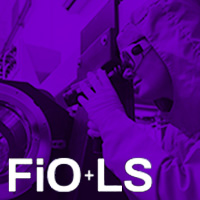Abstract
Metallic nanoparticles (NP) draw intense scientific interest due to their unique physical properties, which differ from those of bulk and atomic species. Nowadays, the aim of this research area is focused, for example, in the nonlinear (NL) optical properties of NP, the dynamics of confined electrons and the possibility of photonic applications. Flytzanis et al. [1,2] performed experiments with silver and gold colloids and demonstrated a large enhancement of the NL susceptibility due to the contribution of the surface plasmon resonance (SPR) of the particles. The results were described by an effective-medium theory valid to describe the third-order nonlinearity. However, because of the large NL response of the NP and because of local field effects, it is expected the observation of high-order effective nonlinearities in the macroscopic behavior of the colloid. As a consequence, more sophisticated effective-medium theories were proposed to derive general expressions for effective high-order susceptibilities [3–5]. Nevertheless, such high-order contributions were not observed probably because the experiments, performed with colloids having low concentration of NP, were based on techniques of low sensitivity. Here, exploiting the large sensitivity of the Z-scan technique [6], we studied, the high order NL response of silver colloids. Indeed, the third-, fifth-, seventh- and ninth-order of NL response were observed for intensities between 0.1 and 1.5 GW/cm2, using a laser beam at 532 nm delivering single 80 ps pulses at low repetition rate. A comparison of the results with the predictions of an effective-medium theory is made and values for the NL susceptibilities are obtained. To provide a quantitative description we consider the intrinsic third- and fifth-order nonlinearity of the silver NP. The effect of the composite geometry is described as that of local fields. It is considered that the electric field induced by the laser beam at each NP is different from the average field in the colloid. The local fields may be larger than the average field and thus an enhancement of the optical response occurs. Size dispersion and correlation effects due to multiple scattering of light are neglected. Under these conditions the theory proposed by Kothari [4] can be applied to take into account the local field influence. The third, fifth, seventh and ninth order susceptibilities were observed for intensities between 0.1 and 1.5 GW/cm2, and for Ag NP filling factors, f, between 0.23 × 10−4 and 1.4× 10−4. The NL refractive indices ni (i=2,4,6,8) and the NL absorption coefficients αi (i=2,4,6,8) presented a linear dependence with f. Fig. 1 illustrates the behavior of the third- and fifth-order nonlinearity as a function of the NP filling factor. The comparison of the results with predictions of an effective-medium theory enabled to understand the origin and the relative magnitude of the effective NL susceptibilities.
© 2005 Optical Society of America
PDF ArticleMore Like This
Cid B. de Araújo, E. L. Falcão-Filho, André Galembeck, Marcela M. Oliveira, and Aldo J. G. Zarbin
JTuC64 Frontiers in Optics (FiO) 2005
Diego Rativa, R.E. de Araujo, and A.S.L Gomes
JWD31 Optical Fabrication and Testing (OF&T) 2008
Cid B. de Araújo, L. H. Acioli, E. L. Falcão-Filho, Marcio H. G. Miranda, and J. J. Rodrigues
ThA4 Nonlinear Optics: Materials, Fundamentals and Applications (NLO) 2004

